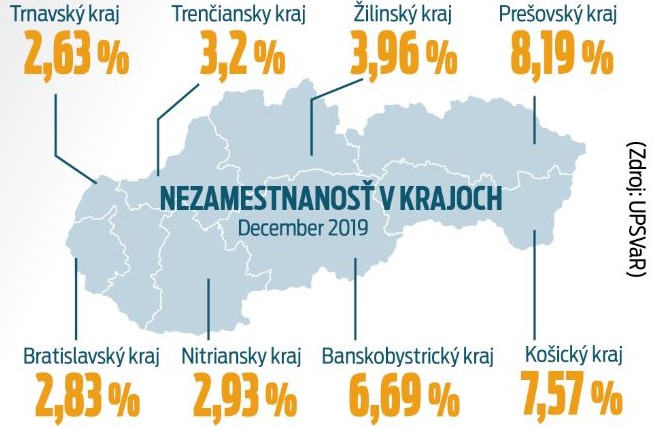Roma Education Fund (REF) calls the attention of Slovakian political and policy stakeholders to urgently and effectively tackle discrimination of Roma in the labor market.
REF was established in the framework of the Roma Decade Initiative in 2005 and its mission is to contribute to closing the educational gaps between Roma and non-Roma. Therefore, REF supports policies and programs that ensure the provision of quality education for Roma, including desegregation programs. Through its activities, REF supports the inclusion of Roma in all levels of national education systems in EU member states and enlargement countries.
REF is active in facilitating Roma employment and developing employability via its various programs. For instance, REF’s branch office in Serbia is implementing a project, with the support of German Financial Cooperation, implemented by the Reconstruction Credit Institute (KfW) on behalf of the German Government. The program aims to develop sustainable mechanisms improving graduation rate of Roma from secondary school and University by facilitating the successful transition of pupils to the labor market. Since 2019, within the program more than 500 Roma secondary school students have received scholarship and mentorship support. Over 250 young Roma have been supported through various professional training opportunities; 185 Roma have been part of first job program as a way to obtain first work experience; and 148 Roma were employed through partnerships with 52 companies and public institutions throughout the country. Additionally, REF is implementing project in Western-Balkan countries and Turkey with the support of the European Commission DG NEAR. This project also focuses on the transition from education to employment of Roma youth applying very similar approaches bringing great results in building up nationwide cooperation with state institutions and for-profit sector as well as equipping Roma beneficiaries with tools and entry cards into the labor market. Furthermore, REF and VELUX Foundations implemented a joint international project aimed to support Roma women acquiring profession in pedagogy. Furthermore, REF currently implements an additional project supported by VELUX Foundations in Hungary, Slovakia and Romania. The aim is to increase the number of fully self-confident Roma youth and young adults graduating from vocational secondary education, to provide facilitation to enter the labor market, and equip them with soft-technical skills.
This Resolution summarizes the employment situation of Roma in Slovakia and sheds light on the reasons of the high unemployment rate, the economic potential of Roma and highlights how REF interventions contribute to increase the employability of Roma Education Fund’s target group. It is important to note that in Slovakia[1] the high unemployment rate is determined by the transitional shock of the early 1990’s in the course when the economy faced a sharp drop in demand for low-skilled and unskilled workforce.
Before the current economic crisis due to COVID 19, the Slovak job market lacked a workforce, thus several companies were looking for employees from other countries. This positioned Roma in an opportunity to provide employment in low skill labour and also for long-term employment where there was a willingness to be trained for positions requested by the labor market. However, Roma (especially youth and women) are still facing difficulties to enter the labor market. Furthermore, the likelihood of being engaged in short term work and being dismissed from positions during crises are greater in case of Roma than non-Roma (European Commission, Civil society monitoring report on implementation of the national Roma integration strategy in Slovakia, 2019).
In 2014 the Roma unemployment rate in Slovakia was 70% among 15-64-year persons, the highest rate in Central Europe (Messing, 2014). According to the public opinion, the reason for high unemployment rate among Roma is coming from their lack of willingness to work and/or the exploitation of the welfare systems (World Bank, 2005). On the contrary, the latest UNDP and FRA surveys (2013) prove that Roma are actively searching for jobs, moreover they prefer safe and regular jobs with modest wage than an unsecure workplace with high income.
There are several reasons which overlap in most cases and result in high unemployment rates among Roma people, but the most striking issue is the low level of education. In comparison to the non-Roma population, Roma have dramatically low level of education. Although the self-declared illiteracy is not as high in Slovakia as in Bulgaria and Romania, the lack of essential skills needed in the labor market is a significant explanatory variable for high unemployment rates. According to the FRA EU-MIDIS II 2016 survey, the most recent form of discrimination Roma face in Slovakia is experienced while looking for employment (FRA, Second European union Minorities Survey -Roma Selected Findings, Luxembourg: Publication office of the European Union, 2016). Thus, racial discrimination as such is also one of the main reasons contributing to the low employment rate of Roma. Additionally, the specificity of the Slovak labor market in terms of its geographical disposition further impedes the opportunity of Roma for employment. Most of the companies, businesses, ensuring job opportunities are located in Bratislava region, while the vast majority of Roma resides on the East part. In other words, job opportunities are far away from the location of Roma communities, resulting the need for continuous commuting that is an additional barrier. For illustrating the different rates of unemployment between the West and East (more and less job opportunities) the below Figure 1 provides information. In addition, it also confirms the statement that the unemployment rate of Roma is significantly higher than for non-Roma via geographic division.
Figure 1: Unemployment rate in Slovakia in 2019

Source: Central Office of Labour, Unemployment remained below 5% at the end of the year: where most jobs will be added this year, 2019
The Roma population in Slovakia is one of the most disadvantaged groups in the labor market, and in addition, a population with a severe lack of data regarding their economic integration (Kahanec, 2014). Unemployment in Slovakia concentrated mainly in the Roma population, who are mainly registered among the long-term unemployed. Unemployment rates between Roma and non-Roma are significantly high among young women and working age population. The main reasons behind the issue are coming from low education attainment and qualification, discrimination, limited access to education, housing, health care and labor market (Kahanec, 2016; Sedlakova 2016). According to the estimates of IFP, the unemployment rate in Slovakia will remain high if the Roma labor force participation and employment do not increase. It was estimated that the aggregate unemployment rate could decline by as much as four percentage points, if Roma attained parity with the non-Roma population in terms of their employment rates.
The World Bank research (2010) states that exclusion of Roma from the labor market causes economic and fiscal losses and it has a huge impact on the countries’ GDP. The annual fiscal losses are hundreds of millions of euros which are the result of lower tax receipts and higher welfare expenditures. The report highlights that the losses could be avoided if Roma had enjoyed better quality education ensuring Roma are equipped with skills preconditions to be competitive in the labor market. In other words, to achieve higher levels of human capital, both inclusive quality education starting from early years and lifelong learning opportunities are inevitable.
—————————————————————————————————————————————–
[1] The same conditions can be said for Hungary

















